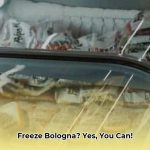Frozen pipes are a camper’s worst nightmare. But what if you could keep your RV’s water flowing, even in freezing temperatures? Heated hoses are the answer, providing warm water access all winter long. For additional ways to keep things from freezing, check out these helpful tips. Choosing the right one, however, can be tricky. This guide simplifies the process, helping you understand the different types of heated hoses, what to look for when buying one, and how to install and maintain it. We’ll cover the basics, focusing on practical advice and avoiding overly technical jargon, so you can confidently choose the perfect heated hose for your needs – whether you’re an RV enthusiast or need one for industrial use. Let’s dive in!
Heated Hose: Your 2025 Buyer’s Guide
Choosing the right heated hose can feel like navigating a maze, but it doesn’t have to be. Let’s make this simple and straightforward, so you can find the perfect hose for your needs and protect your plumbing.
What is a Heated Hose and Why Do You Need One?
Heated hoses are flexible tubes designed to prevent the liquid inside from freezing, a significant advantage in cold climates. They ensure a smooth flow for recreational vehicles (RVs) and prevent operational halts or damages in industrial scenarios. Imagine a chilly winter morning; no one wants frozen RV water pipes. That’s where a heated hose with freeze protection keeps things flowing smoothly. Beyond RVs, heated hoses are vital in industries like construction, agriculture, and chemical processing, where maintaining consistent fluid temperatures is critical. They prevent downtime due to freezing and ensure processes continue uninterrupted.
RV vs. Industrial Heated Hoses: Tailoring to Specific Needs
Before browsing, determine the hose’s application, differentiating between recreational vehicles (RVs) and industrial settings. Each application demands specific features and capabilities.
RVs: Prioritize convenience and reliability, often favoring durable and flexible 12V DC powered heated hoses to withstand bumpy roads and temperature variations. RV heated water hoses offer a seamless winter camping experience by preventing frozen water lines. Look for potable water-safe materials.
Industrial: Industrial settings need higher wattage hoses capable of handling heavy-duty cycles and exposure to harsh chemicals, with potentially higher power sources (120V AC or more). Longer hoses are also frequently needed. Consider factors like chemical compatibility, temperature requirements, and pressure ratings. Therefore, understanding the specific needs is crucial when selecting a chemical-resistant heated hose for industrial use. For example, a Flexotherm™ heated hose might be suitable for transferring hot oil or asphalt.
Choosing YOUR Perfect Heated Hose: Key Features to Focus On
Don’t settle for the cheapest option. Several critical factors affect a heated hose’s performance and lifespan.
- Length: Measure twice, buy once! Secure a hose long enough for your needs, while avoiding unnecessary extra length (extra weight and cost). Consider the distance from the water source to your RV’s inlet or the length required for your industrial application.
-
Material: Materials vary, each with different strengths and weaknesses.
- Rubber: A flexible and durable all-around choice. EPDM rubber offers excellent weather resistance.
- PVC: A budget-friendly option, but less flexible than rubber and more prone to damage from chemicals. Ensure it’s drinking water safe for RV use.
- Silicone: Offers superior flexibility and chemical resistance at extra cost. Ideal for extreme temperatures and harsh chemicals in industrial settings.
- PTFE (Teflon): Excellent chemical resistance and high-temperature performance, often used in industrial applications for transporting corrosive materials.
Consider the hose’s environment, chemical exposure, and flexibility requirements when selecting material.
* Power Source: A non-negotiable factor; ensure proper voltage (RVs: 12V DC; Industrial: 120V AC or higher). Wrong voltage can damage the hose. Verify that the power source matches the hose’s requirements to prevent damage or malfunction.
* Wattage: Select a wattage balancing heating needs and energy consumption. Higher wattage isn’t always better. Consider the ambient temperature and the desired internal temperature when choosing wattage.
* Temperature Range: Ensure the hose can handle the lowest expected ambient temperature and maintain the required fluid temperature.
* Safety Certifications: Prioritize safety with certifications like UL (Underwriters Laboratories) or NSF (National Sanitation Foundation) for potable water hoses to ensure safety standards. Don’t compromise on safety.
* Insulation: Check the quality and thickness of the insulation. Good insulation minimizes heat loss and improves energy efficiency.
| Feature | RV Application | Industrial Application |
|---|---|---|
| Power Source | 12V DC | 120V AC or higher, depending on application |
| Typical Length | 25-50 feet | Often much longer (hundreds of feet) |
| Common Materials | Rubber, flexible PVC | Silicone, chemical-resistant rubber, reinforced PVC, PTFE |
| Wattage | Lower wattage (often 50-200 watts) | Higher wattage (often 300+ watts) |
| Safety Certification | UL Listed or equivalent, NSF for potable water | UL Listed or industry-specific certifications |
| Temperature Range | -20°F to 40°F typically | -40°F to 200°F or higher |
Installation: Simple Steps for a Safe Setup
Although specifics vary by product, some general guidelines apply. Always consult your hose’s manual for detailed steps.
- Gentle Handling: Avoid sharp bends and kinks. These can damage the heating element or the hose material.
- Secure Connections: Tighten connections to avoid leaks. Use Teflon tape on threaded connections for a better seal.
- Consult the Manual: Follow manufacturer’s instructions closely. Improper installation can void the warranty.
- Grounding: Ground the hose according to instructions to prevent electric shocks. This is especially important for hoses used with higher voltage power sources.
- Insulation: Ensure all electrical connections are adequately insulated to prevent short circuits and shocks. Use weatherproof connectors and junction boxes.
- Proper Support: Support long sections of hose to prevent strain on the connections and avoid kinking.
Improper installation can void warranties and create safety hazards.
Maintenance: Keeping Your Heated Hose in Top Shape
A little TLC goes a long way in prolonging the lifespan, as regular maintenance helps with extending hose’s lifespan:
- Regular Cleaning: Thoroughly rinse after each use to prevent performance-reducing build-up. Use a mild detergent for stubborn deposits.
- Visual Inspections: Regular check for cuts, cracks, abrasions, or any signs of damage. Replace the hose if any damage is found.
- Electrical Checks: Periodically inspect the electrical connections and wiring for corrosion or damage.
- Storage: Store in a cool, dry place away from sunlight and extreme temperatures, coiling neatly to avoid damage. Avoid storing the hose in a way that puts stress on the connections.
Market Outlook: Future of Heated Hoses
The market for heated hoses is growing, driven by the RV and industrial sectors. There’s an anticipated increased demand for energy-efficient and long-lasting hoses. Expect innovation in heating technologies, materials, and designs. Ongoing research may yield adaptable hoses with improved temperature control in the near future. Expect to see more smart features, such as remote monitoring and control via smartphone apps.
Safety: Always the Top Priority
This is the most vital section. Never use a damaged heated hose. Replace hoses showing wear, cracking, or damage to the cord or insulation. Regular inspection is essential, and manufacturer recommendations should be followed religiously.
- GFCI Protection: Always use a Ground Fault Circuit Interrupter (GFCI) outlet when connecting the hose to a power source, especially in wet environments.
- Avoid Overloading: Don’t overload the electrical circuit with too many devices.
- Professional Inspection: If you are unsure about any aspect of installation or maintenance, consult a qualified electrician or technician.
By carefully considering these factors, you’ll be well-equipped to choose a heated hose that meets your needs and ensures safety. Selecting the right hose balances cost, efficiency, and longevity.
How to Choose the Best Heated Hose for RV Winterizing
Key Takeaways:
- Prioritize temperature ratings and power consumption based on typical camping conditions.
- Consider hose length and fitting compatibility with your RV plumbing and ensure it can adequately winterize your system.
- Research durability and lifespan for longer-term value.
- Understand your RV’s power capacity before purchasing a hose.
- Always use a pressure regulator to protect your RV’s plumbing.
Understanding Heated Hoses for RVs
Winterizing your RV involves protecting its plumbing system from freezing temperatures, making a heated water hose crucial to protecting your RV from costly damage. So, how do you pick the right one? Let’s analyze key selection features.
Essential Factors for Choosing a Heated Hose
- Temperature Rating: Absolutely crucial, as you need a hose temperature rating far lower than the coldest expected temperatures. A frozen hose is useless. Check the manufacturer’s specifications for the minimum operating temperature.
- **Power Consumption (Wattage):
- Achieve Anesthesiology Work-Life Balance: Your Guide - December 4, 2025
- Unlock Young Doctors’ Work-Life Balance: Actionable Strategies Now - December 2, 2025
- Unlock Life Harmony: Work-Life Integration Guide - November 30, 2025















